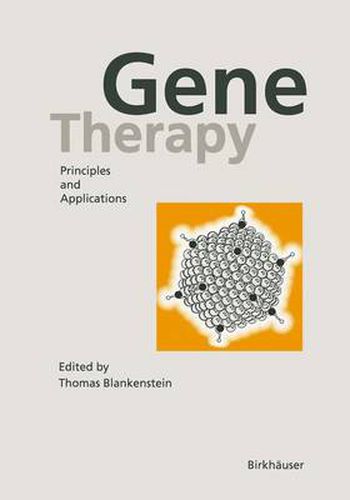Readings Newsletter
Become a Readings Member to make your shopping experience even easier.
Sign in or sign up for free!
You’re not far away from qualifying for FREE standard shipping within Australia
You’ve qualified for FREE standard shipping within Australia
The cart is loading…






This title is printed to order. This book may have been self-published. If so, we cannot guarantee the quality of the content. In the main most books will have gone through the editing process however some may not. We therefore suggest that you be aware of this before ordering this book. If in doubt check either the author or publisher’s details as we are unable to accept any returns unless they are faulty. Please contact us if you have any questions.
K. Sikora Gene therapy is one of the fastest developing areas in modern medical research. Transcending the classical preclinical and clinical disciplines, it is likely to have far reaching consequences in the practice of medicine, as we enter the next millennium. Currently, there are over 200 seperate active clinical trials with over 2,500 patients entered. These studies involve over 20 countries and include patients with a wide range of diseases, including cancer, HIV infection; cystic fibrosis (CF), haemophilia, diabetes, immune deficiencies, metabolic disorders, ischaemic heart disease and arthritis. Gene therapy can be defined as the deliberate transfer of DNA for therapeutic purposes. There is a further implication that only specific sequences containing rel evant genetic information are used; otherwise, transplantation procedures involving bone marrow, kidney or liver could be considered a form of gene therapy. The con cept of transfer of genetic information as a practical clinical tool arose from the gene-cloning technology, developed during the 1970s. Without the ability to isolate and replicate defined genetic sequences, it would be impossible to produce purified material for clinical use. The drive for the practical application of this technology came from the biotechnology industry with its quest for complex human biomole cules produced by recombinant techniques in bacteria. Within a decade, pharma ceutical-grade insulin, interferon, interleukin 2 and tumour necrosis factor were all involved in clinical trials. The next step was to obtain gene expression in vivo.
$9.00 standard shipping within Australia
FREE standard shipping within Australia for orders over $100.00
Express & International shipping calculated at checkout
This title is printed to order. This book may have been self-published. If so, we cannot guarantee the quality of the content. In the main most books will have gone through the editing process however some may not. We therefore suggest that you be aware of this before ordering this book. If in doubt check either the author or publisher’s details as we are unable to accept any returns unless they are faulty. Please contact us if you have any questions.
K. Sikora Gene therapy is one of the fastest developing areas in modern medical research. Transcending the classical preclinical and clinical disciplines, it is likely to have far reaching consequences in the practice of medicine, as we enter the next millennium. Currently, there are over 200 seperate active clinical trials with over 2,500 patients entered. These studies involve over 20 countries and include patients with a wide range of diseases, including cancer, HIV infection; cystic fibrosis (CF), haemophilia, diabetes, immune deficiencies, metabolic disorders, ischaemic heart disease and arthritis. Gene therapy can be defined as the deliberate transfer of DNA for therapeutic purposes. There is a further implication that only specific sequences containing rel evant genetic information are used; otherwise, transplantation procedures involving bone marrow, kidney or liver could be considered a form of gene therapy. The con cept of transfer of genetic information as a practical clinical tool arose from the gene-cloning technology, developed during the 1970s. Without the ability to isolate and replicate defined genetic sequences, it would be impossible to produce purified material for clinical use. The drive for the practical application of this technology came from the biotechnology industry with its quest for complex human biomole cules produced by recombinant techniques in bacteria. Within a decade, pharma ceutical-grade insulin, interferon, interleukin 2 and tumour necrosis factor were all involved in clinical trials. The next step was to obtain gene expression in vivo.